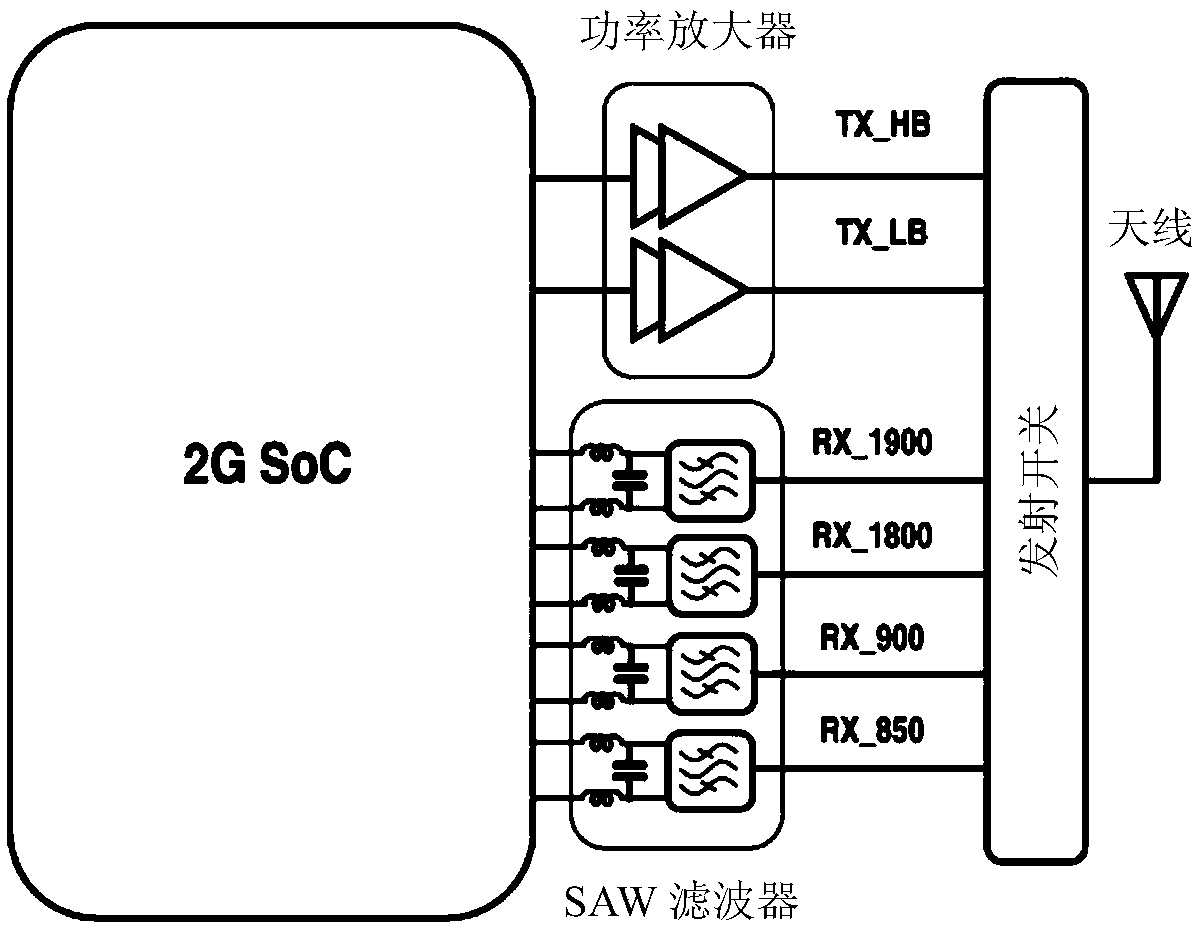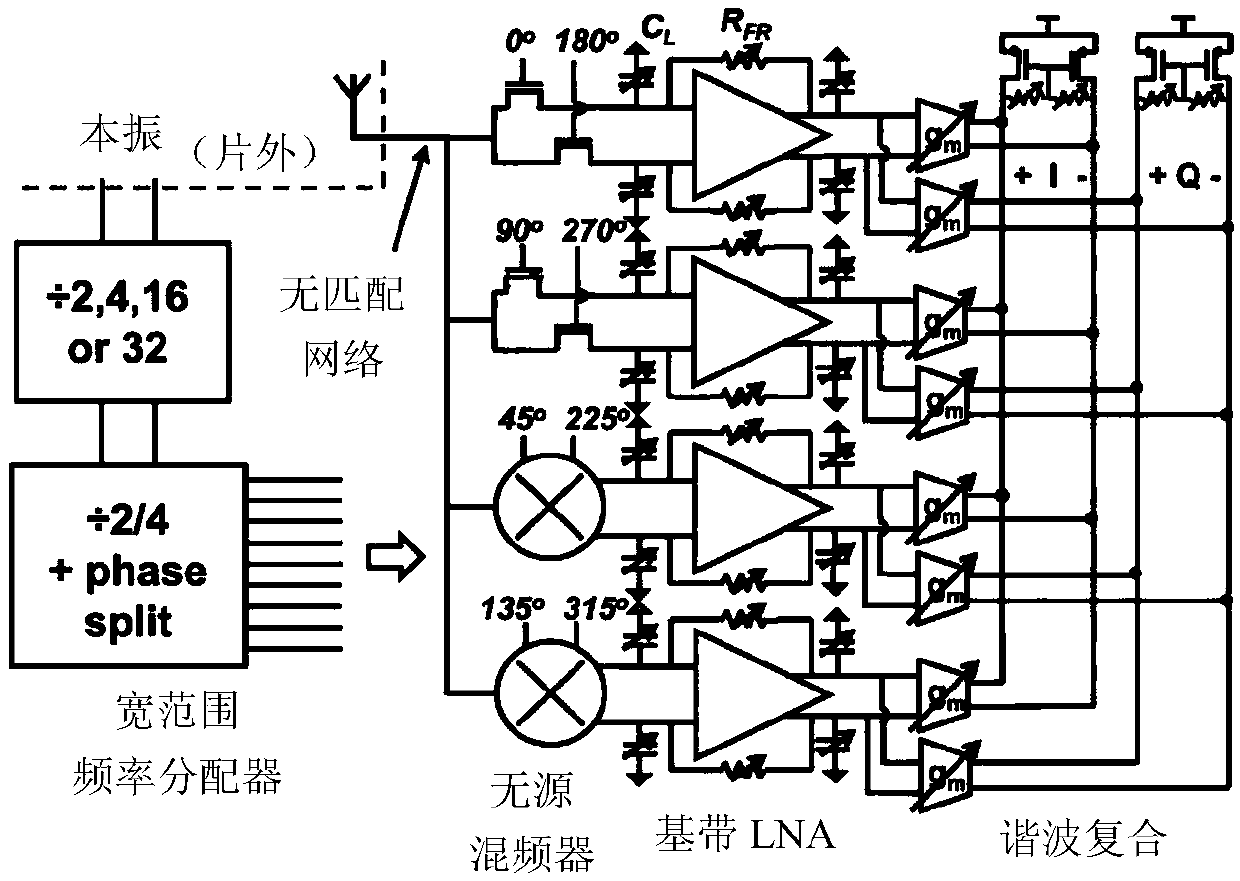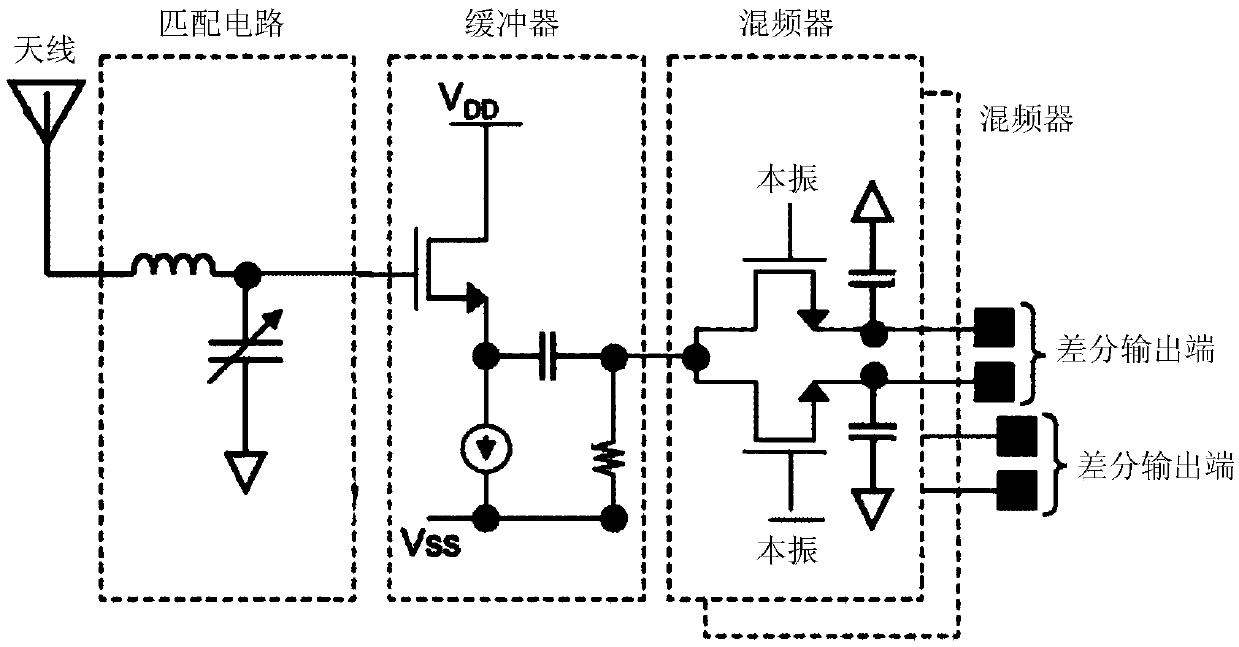A receiver without off-chip filter
A filter and receiver technology, applied in the field of RF front-end, can solve the problems of reducing signal-to-noise ratio, increasing power consumption, noise signal, etc., achieving low noise figure, improving linearity, and eliminating compromise relations
- Summary
- Abstract
- Description
- Claims
- Application Information
AI Technical Summary
Problems solved by technology
Method used
Image
Examples
Embodiment Construction
[0028] see Figure 4 , which is the first embodiment of the receiver provided by the present application that omits the off-chip filter. The receiver shown in the first embodiment includes a matching network, a passive filter, a baseband amplifier and a filter in sequence from the antenna down. The matching network includes a capacitor C1 and an inductor L1 connected in series. The first end of the capacitor C1 is used as the input end of the matching network to receive the radio frequency signal from the antenna. The second end of the capacitor C1 is connected to the first end of the inductor L1 as the output end of the matching network. The second end of the inductor one L1 is grounded. The passive filter has N channels connected in parallel, and each channel consists of a switching tube T N and a sampling capacitor C LN connected in series, and the switching tube T in each channel N are driven by a carrier signal LO N Control it on or off. see Figure 5 , the N swi...
PUM
 Login to View More
Login to View More Abstract
Description
Claims
Application Information
 Login to View More
Login to View More - R&D
- Intellectual Property
- Life Sciences
- Materials
- Tech Scout
- Unparalleled Data Quality
- Higher Quality Content
- 60% Fewer Hallucinations
Browse by: Latest US Patents, China's latest patents, Technical Efficacy Thesaurus, Application Domain, Technology Topic, Popular Technical Reports.
© 2025 PatSnap. All rights reserved.Legal|Privacy policy|Modern Slavery Act Transparency Statement|Sitemap|About US| Contact US: help@patsnap.com



